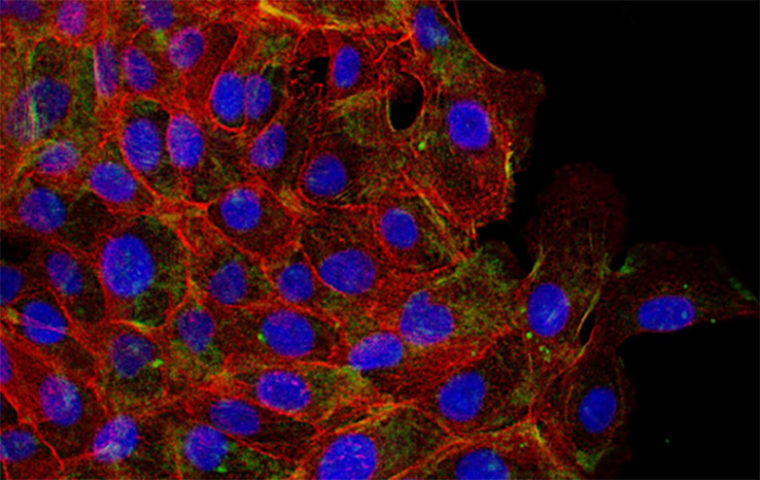In the body, cells move around to form organs during development; to heal wounds; and when they metastasize from cancerous tumors. A mechanical engineer at Washington University in St. Louis found that cells remember the properties they had in their first environment for several days after they move to another in a process called mechanical memory.
Amit Pathak, assistant professor of mechanical engineering & materials science in the School of Engineering & Applied Science, spent three years using mechanobiology and materials science to find answers to these questions: If cells sit in one environment and move to another one, do they remember the first one, and do they inherit any of the properties of the first environment? The results of the research, conducted in collaboration with Gregory Longmore, professor of medicine in the Department of Internal Medicine’s Medical Oncology division at Washington University School of Medicine in St. Louis, were available in advanced online publication Sept. 8 in the journal Biomaterials.
“Cells are good at adapting to the environment,” Pathak said. “When human beings store a lot of memory, they are less adaptable to new situations. If you delete memory, you are more adaptable. That’s what I think these cells are doing. If they have a lot of memory from their past environment, they are less adaptable to the new one.”
To prove his hypothesis, Pathak created a device from which he can measure how long the cells’ memory lasts in the new environment. The device, which has a U.S. Patent pending, has two sides divided by a barrier. Samila Nasrollahi, a graduate student in Pathak’s lab, placed cells in the stiff side of the device, a similar environment as a malignant tumor. After a few days, she removed the barrier, and the cells quickly invaded the other side of the device, which is a soft environment. In addition, they found that the cells maintain the properties they had in the stiff environment for three days in the new environment, due to retaining the YAP gene in the nuclei. The YAP gene is amplified in human cancers.
“Removing the barrier could be similar to the process of cancer cells escaping the primary tumor by breaking through the surrounding tissue, which is the genesis of metastasis,” Pathak said.
Pathak says the device mimics a tumor environment in the body.
“This answers one of the crucial questions in tumor invasion,” Pathak said. “If the tumor cell leaves a very stiff active environment and goes to soft surrounding tissue, why don’t they stop there, because a soft microenvironment is known to slow migration?”
In future research, Pathak will look more closely at breast tumor invasion with Longmore, who will supply primary breast cancer cells from his lab to be tested in Pathak’s device. This new direction of research was recently funded by the Siteman Cancer Center at Barnes-Jewish Hospital and Washington University School of Medicine. Pathak is working with the university’s Office of Technology Management to patent the device.
